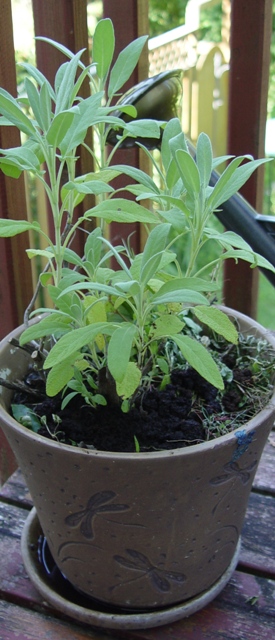
Contents
How to Store Herbs
Herbs are a great way to add flavour to your cooking. Of course, they taste the best when they are used moments after harvesting. I know this isn’t always practical, and this post will give provide some tips on how to store herbs so that you always get the best flavour.
Short Term Storage
If you are not lucky enough to have your own herb garden, then you are going to want to store herbs when you bring them home from the grocery store or market. How you store them really depends on the type of herbs you have.
Storing Herbs in the Refrigerator
Many herbs can be easily stored in the refrigerator by following a few easy steps:
- Poke some holes in a zippered plastic bag.
- Put a dry paper towel in the bag.
- Fill the bag loosely with dry leaves or stems.
- Zip the bag 3/4 of the way shut.
- Keep the bag in the refrigerator crisper drawer for 3 to 5 days.
- When you are ready to use the herbs, wash and spin dry the leaves.
This method works particularly well for chervil, chives, cilantro, dill, fennel leaves, marjoram, mint, oregano, parsley, rosemary, sage, and thyme.
Other Methods
Basil
Never store basil in the refrigerator. Refrigeration ruins basil. The leaves will lose their flavour when stored at temperatures below 50°F. The leaves will turn black at temperatures below 45°F.
The best way to keep basil is to place the freshly picked stems in a glass of water out of direct sunlight. The water needs to be changed everyday. If left in the water long enough, the stems will start to form roots. You can then plant these cuttings to grow a whole new basil plant.
Long Term Storage
If you need to store herbs long term, you generally have two options: drying or freezing.
Drying Herbs

Dried herbs can be kept and used for up to 12 months. Following these instructions will provide the best results:
- Gather small bunches of the herb so that the group of stems is about 2 cm (a little less than 1 inch) across.
- Strip the leaves from the bottom quarter of the stems.
- Tie a piece of string or twine tightly about 2 cm from the end of the stems.
- Hang the herbs upside down in a warm, dark, dry, dust free location.
- When the leaves become dry and crumbly, strip the off the stems and put them in glass jars.
Note that not all herbs are suitable for drying. Basil, dill, parsley, cilantro, fennel and chervil are not suitable for drying.
Herbs that dry well include:
- rosemary
- sage
- oregano
- marjoram
- thyme
- winter savory
- tarragon
- chamomile
- mint
Freezing Herbs
Sometimes (especially when you have a lot), freezing herbs is the only option. Basil, dill, parsley, cilantro, fennel and chervil can be frozen using the following method:
- Place 2 cups of clean leaves (stems removed) into a blender or food processor.
- Add 1/2 cup olive oil.
- Process until a loose purée is formed. You may need to add an extra tbsp or two of olive oil.
- Pour the purée into ice cube trays and freeze.
- Once they are frozen, pop the cubes out of the tray and wrap them in plastic. Then store them back in the freezer in an airtight container.
Do you store herbs or do you always use them fresh? What methods do you use? It’d be great if you let us know in a comment.
Thanks.

I freeze all my fresh herbs from my garden. However, I freeze them in mixed packages in small freezer bags. For example I freeze several bags containing thyme, chives, sage add in some pepper corns and celery leaves then when I’m making chicken broth I can just throw the whole package in. Works great!